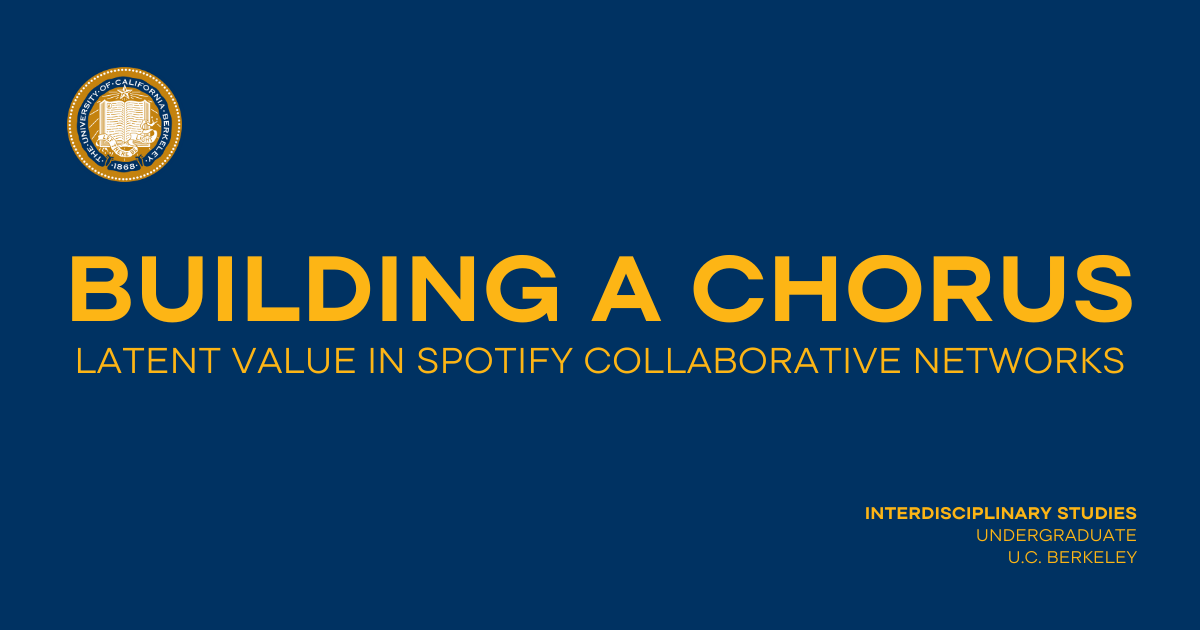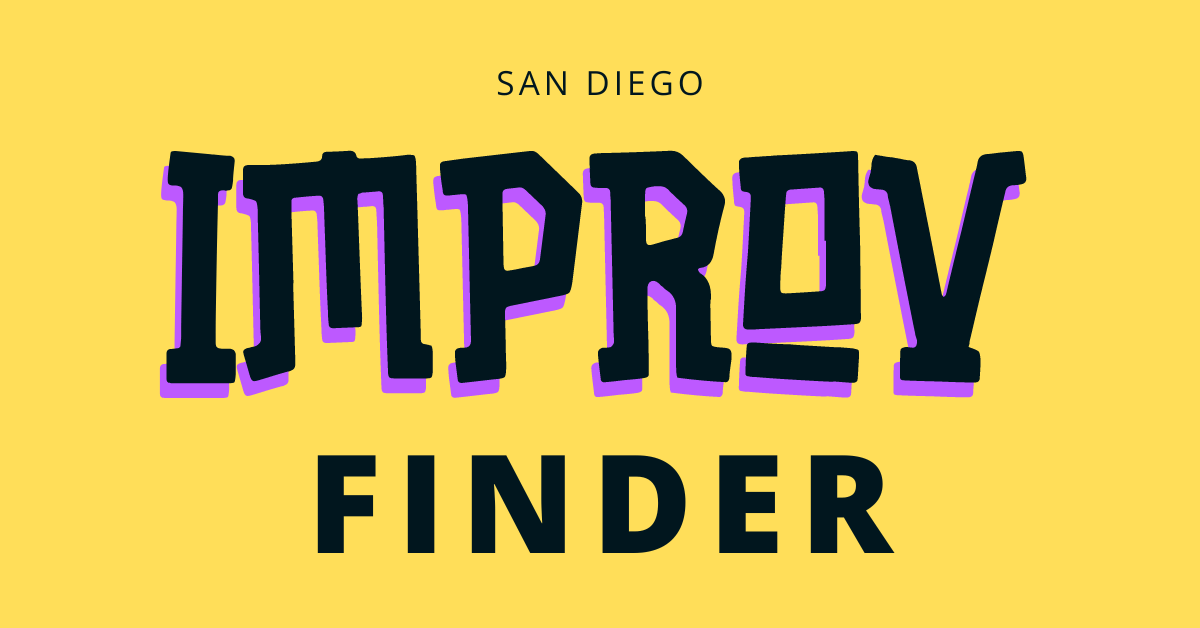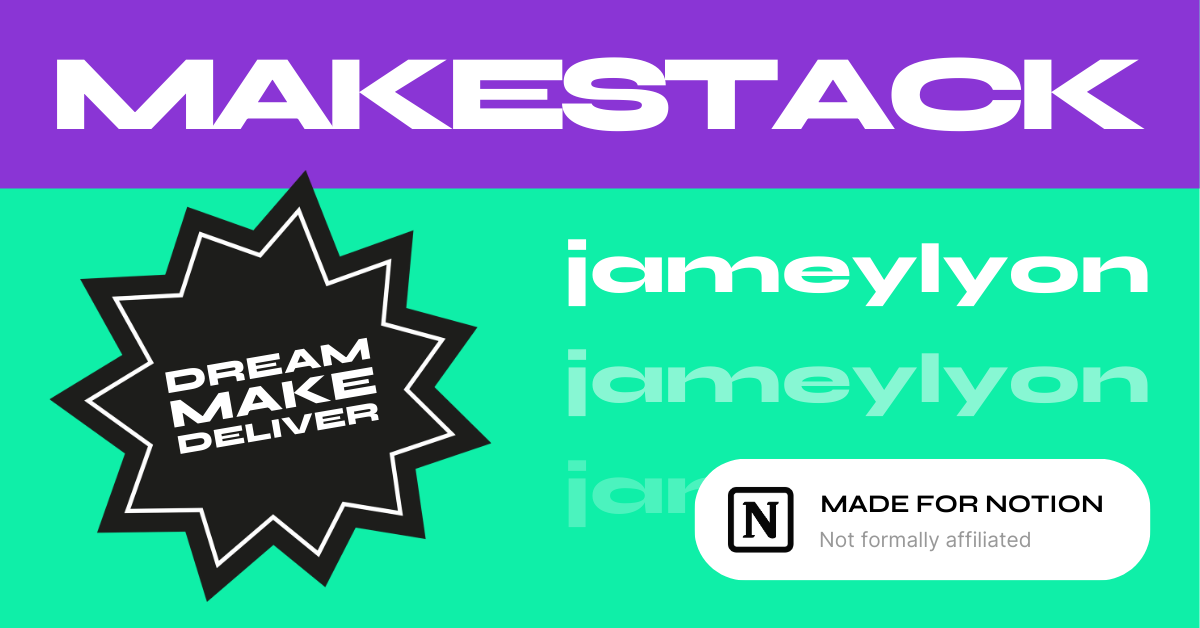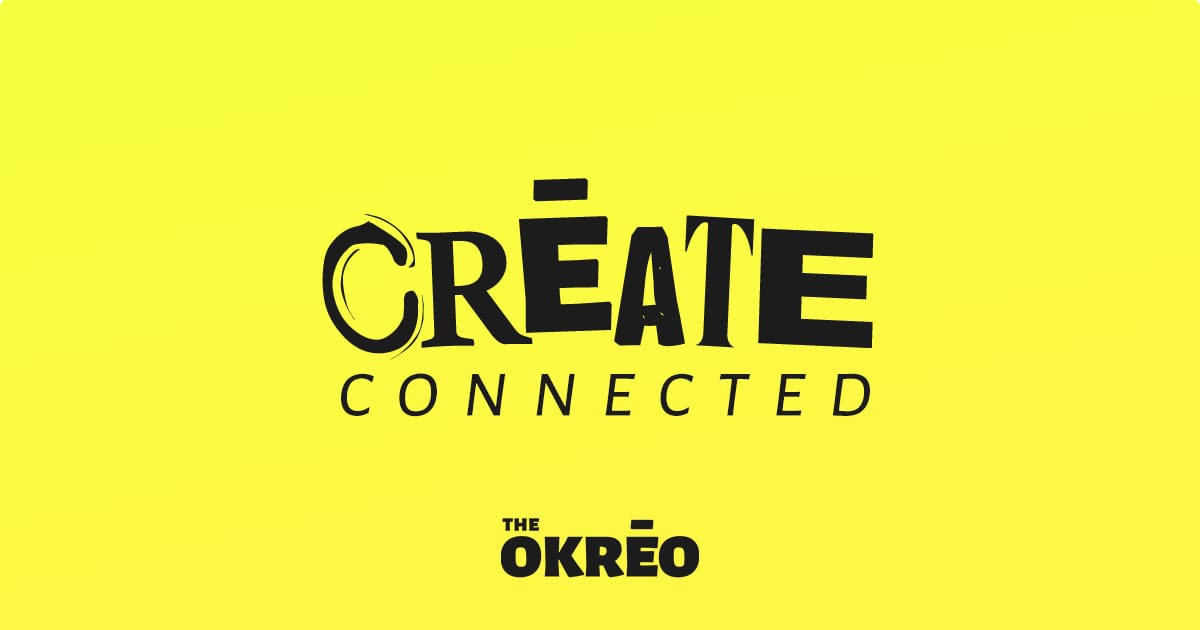Building a Chorus [Thesis]
For my undergrad thesis at U.C. Berkeley, I built a system to interpret and uncover latent value in Spotify artists' collaborative networks.

With my thesis, I aimed to uncover latent value in Spotify artists' collaborative networks. By analyzing these networks, the project sought to provide insights into how small to mid-sized independent artists can leverage collaborations to build their audience and generate additional value.
This project contains concepts derived from systems theory and systems science. At the time of my research, my knowledge of these fields was limited. My perspective at the time was oriented using business, computer science, and network/information theory.
Some findings are similar to systems theory/systems science concepts, but are presented in a far less elegant manner. 🙃
Presentation of Findings
Thesis Paper
🗞️ Abstract
With an increasing demand for data literacy coupled with COVID-19’s effects on the music industry, small to mid-sized independent artists face challenges of audience growth and value generation. Artists’ collaborative networks present a pre-existing dataset which may represent latent value to the artist. This study aims to analyze Spotify artists’ collaborative networks to determine aspects of these collaborative networks that may represent such insights, as well as how those patterns may reflect practices common across artists of similar genres or followings. In the context of this study, value is considered as any knowledge that informs artists’ relationships with current or future musical collaborators. To address these aims, a set of ego artists of varying sizes and genres were selected through Spotify using consecutive sampling. Their extended collaborative networks were then gathered using snowball sampling out to a specified network size. The collected data was then analyzed using social network analysis and coded inductively. Analysis culminated in four major findings, which are congruent with similar trends identified in related studies. Results suggest that small to mid-sized independent artists’ collaborative networks contain information on influential collaborators and collaborative trends across genres and artists following sizes. For this reason, artists’ collaborative networks should be reviewed when pursuing audience growth or value generation.
Keywords: Spotify, artist collaboration, music collaborative network, music metadata
💭 Background
The music industry has become increasingly data-driven, yet many artists struggle to derive value from their work. With the dominance of music streaming services like Spotify, the traditional revenue models for artists have shifted, and understanding musical metadata has become crucial. The COVID-19 pandemic further exacerbated these challenges by limiting live performances and other income streams.
🎯 Objective
My main objective was to analyze Spotify artists' collaborative networks to identify patterns and insights that can help small to mid-sized independent artists grow their audience and derive value from their collaborations.
🧑🔬 Methodology
The study employed social network analysis (SNA) to examine the collaborative networks of 30 North American Spotify-listed artists. The process involved:
- Artist Selection: Consecutive sampling was used to select 30 artists across genres like Hip-Hop, Rap, Pop, R&B, and IDM/Beats, ensuring a range of follower counts from 100 to 250,000.
- Data Collection: I developed and used the Python tool korus.py to collect metadata and collaborative data for each artist and their 1st and 2nd-degree connections, resulting in a sample size of 6,125 artists.
- Network Analysis: The data was analyzed using the NetworkX and Plotly Python libraries to generate graphs and calculate attributes such as degree centrality and eigenvector centrality. The findings were then inductively coded for patterns.
💡 Findings
The study revealed four major findings:
- Collaborative Accretion: There was a positive correlation between an artist's follower count and the size of their collaborative network, with notable exceptions among artists affiliated with large labels.
- Clique Makers: Artists who acted as bridges and influential nodes increased in frequency with the artist's follower count. These clique makers connected disparate groups within the network.
- The Kendrick Effect: Ego artists' networks often included one or a few "superstar" artists with significantly higher follower counts, indicating a winner-take-all dynamic
- Implied Networking: Non-traditional performing artists like producers and beatmakers played crucial roles in collaborative networks, often serving as influential connectors.
🤔 Analysis
The findings suggest that understanding and leveraging collaborative networks can provide significant value to artists.
- Collaborative Accretion indicates that increasing collaborations can lead to audience growth.
- Clique Makers highlight the importance (and value) of influential connections within one's network.
- The Kendrick Effect underscores the challenge of competing with superstar artists and usurping "success to the successful" dynamics.
- Implied Networking reveals the hidden influence of non-traditional collaborators.
🏁 Conclusion
This project demonstrated that small to mid-sized independent artists could benefit from a deeper understanding of their collaborative networks. By identifying key collaborators and leveraging network effects, artists can enhance their audience reach and value generation.
🔮 Impact
The project's impact lies in its potential to inform artists' strategic decisions regarding collaborations. By providing insights into network dynamics, Building a Chorus empowers artists to optimize their collaborations, build stronger networks, and ultimately enhance their visibility and success in the music industry.
The study also lays the groundwork for future research into collaborative networks and their influence on artists' careers.





